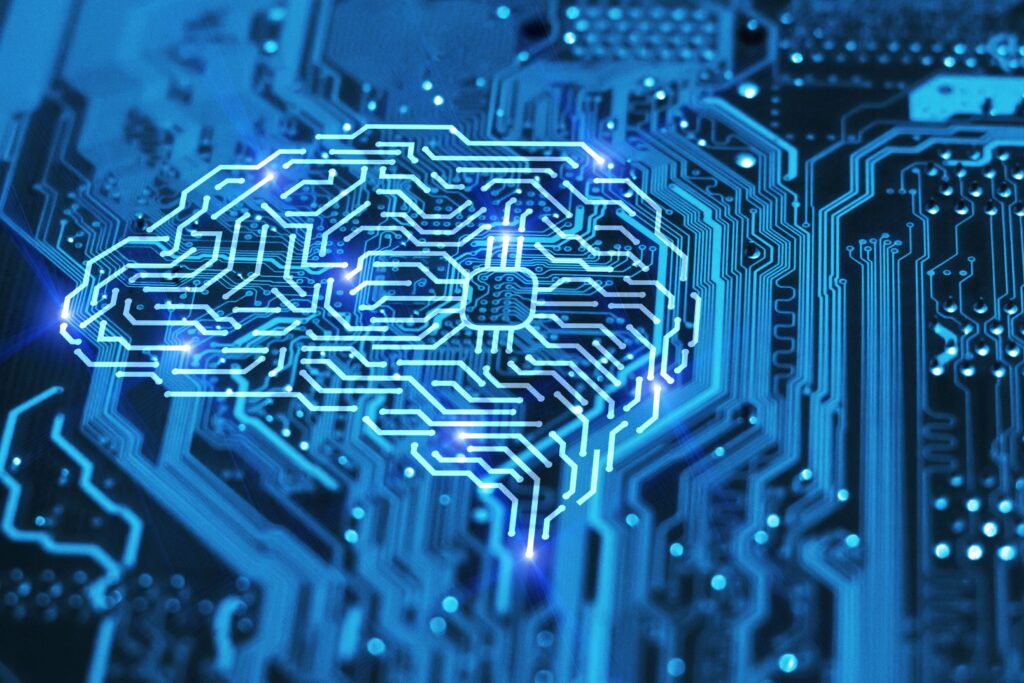The responsible implementation of Artificial Intelligence within MedTech will transform the efficiency of the industry. But which areas within medical device development will be impacted? And what is the impact likely to look like? Based on recent reports and guidance, our Head of eHealth, Paul Gardner shares his thoughts…
Artificial Intelligence in medical device design
Change is happening in the way systems are being engineered across a wide range of institutions – from educational organisations, to start-ups, to large corporations. The ease with which we can create, train and deploy software modules based on machine learning fuels this shift.
As more data becomes available to train a modern machine learning system, the accuracy of the system gets better. And so, to improve system performance, we need to place a strong emphasis on ensuring that the data used to train a machine learning system is curated and managed.
What does this mean for medical device design?
- Investment will be increasingly funnelled into maintaining teams who head up data curation and performance monitoring
- Continuous improvement will remain an integral part of the attraction of machine learning when creating components of Artificial Intelligence systems that read sensor data or text streams, and then adapting the overall behaviour of the AI system accordingly
- Demand will increase for employees with skill sets that include machine learning

Artificial Intelligence in medical device manufacture
In reality, Artificial Intelligence in medical device manufacture is a collection of different technologies such as machine and deep learning, analytics, and computer vision, all working and evolving together to enable machines to simulate human intelligence.
Manufacturing at scale requires prompt and accurate monitoring to ensure efficient production levels and to minimise downtime. Whilst traditional methods still prove valuable in this area, there is the increasing need to monitor the wide range of possible signs of manufacturing line or process failure.
In this context, systems that can be trained to deal with irrelevant changes in a manufacturing set-up allow for greater flexibility within a production inspection setting – for example, intelligent monitors can be re-trained or fine-tuned when manufacturing processes change.
High-resolution cameras continue to drop in price, whilst AI-based image recognition software and technologies continue to improve. These two factors and more are leading to greater adoption of real-time in-line inspection. Additionally, using machine learning to predict preventative maintenance for manufacturing equipment will further enhance process reliability.
What does this mean for medical device manufacture?
- Minor changes in production lines will become easier to accommodate through retraining existing equipment or through automation
- Greater adoption of real-time in-line inspection will become apparent due to AI based image recognition
- A higher level of process reliability will be attained due to AI based preventative maintenance prediction

Regulating Artificial Intelligence Systems as medical devices
FDA
Several pre-market approvals have recently been provided under the FDA De Novo pre-market pathway (for more on De Novo, find our quick-read fact sheet here). Apple Watch AF detector and DreaMed (a Diabetes management support tool that provides personalised treatment plans) are recent examples.
But for the certification of Artificial Intelligence related technologies, the FDA has signalled a different approach that shifts the centre of mass from a full focus on the “device” or its “performance”, to a focus on the company and its processes.
The FDA`s Digital Health Software Precertification Pilot Program (launched in 2019) in its current form leverages the idea of software as a medical device (SaMD), but pays particular attention to the culture of the company backing the SaMD entity, including its organisational excellence.
The move is designed to support companies offering Artificial Intelligence for patient management tools, diagnostic or analytical systems which include no physical device, but which could determine the course of treatment, and as such carry life-or-death implications.
EU
In EU COCIR, the European Trade Association representing the medical imaging, radiotherapy, health ICT and electromedical industries has provided an in-depth analysis of the legal requirements using AI in medical devices, and concludes that AI can be deployed in a way that is consistent with EU MDR and EU IVDR.
To facilitate the practical implementation of the legal requirements in the EU MDR, EU IVDR and GDPR, COCIR recommends the adoption of practical guidance, supported by the development of international standards. COCIR makes concrete proposals for such guidance throughout their analysis which you can access here.
The relevance of AI change dynamics
Some Artificial Intelligence, so called “Locked AI”, is not changed during runtime. “Locked AI” is AI that provides the same result every time the same input is applied to it – with the design of the AI remaining unchanged. But equally, other Artificial Intelligence can change during runtime in the following ways:
- Change by user: when an AI-based device allows users to select an appropriate working point, for example, to balance sensitivity vs. specificity of an algorithm, or to temporarily select a working point with an increased sensitivity for a screening application during an outbreak while opting for higher specificity at other times
- Discrete change through learning: when an AI-based device learns in the field whereby the updated model is activated via explicit manufacturer or user interaction (e.g. by selecting a discrete state along the learning curve)
- Continuous change through learning: when an AI-based device learns in the field whereby the model is updated without explicit manufacturer or user interaction
A clear understanding of these change dynamics is crucial for manufacturers preparing their AI product for certification.
What does this mean for regulating AI as a medical device?
- Moving forward, a more holistic approach will be needed from companies looking to certify their Artificial Intelligence system
- Manufacturers will need to specify a change envelope or change boundaries and an Algorithm Change Protocol based on the AI change dynamics as part of their device`s technical documentation for evaluation during conformity assessment
As long as the device operates within the related change boundaries, its safety and performance are guaranteed (e.g. with a minimum specificity and sensitivity). The manufacturer should be able to demonstrate why the chosen parameters and threshold values are valid in consideration of the clinical state and intended purpose of the device. Manufacturers that make significant changes to the pre-determined Algorithm Change Protocol should update their technical documentation, including the clinical evaluation and need to perform a new conformity assessment.

In summary
The use of AI within MedTech will drive reduced costs in some areas but will require investment in new areas to provide those reductions longer term. New skillsets will need to be adopted and continuously developed. Data curation and performance monitoring will be critical. And a pre-determined Algorithm Change Protocol to ensure compliance status of AI during its lifecycle will be required.
In short, replacing labour activities with faster and more accurate intelligent automation will serve to enhance worker capability to perform higher-value tasks, making capital stock more productive. To this end, AI will undoubtedly bring new and exciting growth to the medical device industry.
Paul will soon be sharing more thoughts on AI in our follow-up article – Ethics, Expectations, and Education: What lies ahead for AI in medical devices? Check back with us to learn more about the ethical considerations around AI, how to use biased AI to improve decision making, and how to use digital health approaches to address knowledge gaps.
Until then, here are some useful resources on the impact of AI on the medical device industry:

